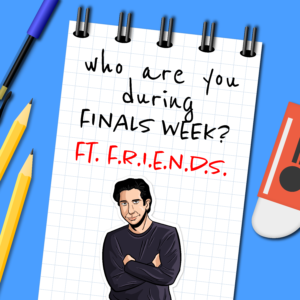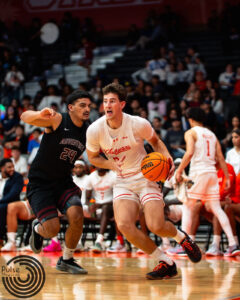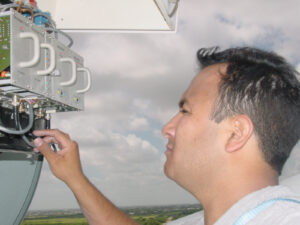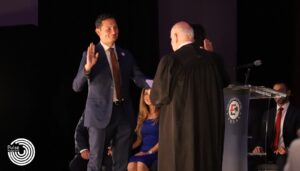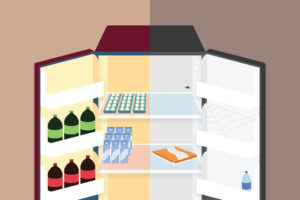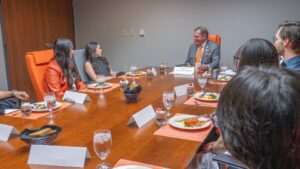Addressing acceptance
I was scrolling through Instagram when I saw a post from a non-binary model. Usually, posts do not make me think twice but seeing their content got me curious about who they are. Although I hesitated to look at their profile, I tapped their profile picture and saw their high–fashion content, alongside a massive following of more than 1,000 people. While scrolling through their account, I wanted to ask them questions; however, how could I do that respectfully?
That question kept me nervous to ask non-binary people about themselves because I did not want to sound rude or use the wrong words.
I had no prior knowledge of the non-binary community during that time. Like the curious person I am, I developed assumptions based on what I did know. However, those assumptions never left my head to be respectful of their feelings.
“Google is free,” which is said too often on social media. As mentioned by several communication professors, we live in an age where knowledge is widely accessible to everyone. That pushed me to educate myself about the community.
TikTok is where I saw a lot of non-binary people. What made the app appealing was being able to listen. Their stories and experiences developed an appreciation of their lives and unintentionally helped me.
“Why not experiment identifying as non-binary,” I thought to myself.
The first thing I did to change my gender identity was adding gender-neutral language into my conversations. At first, I practiced mentally and to myself because I wanted to do it confidently.
“It’s important to acknowledge that here’s a whole sort of continuum of gender expression that are not defined simply by binaries of like female versus male until using gender–neutral pronouns, recognizes the fluidity and multiplicity of gender and moves us away from the gender binary,” Cathryn Merla-Watson, co-director for Women and Gender Studies at UTRGV, told me over Zoom.
Although talking to a person while keeping their pronouns in mind was not difficult to practice and incorporate, I flipped flopped between “him/they” and “they/them” pronouns for a few months.
Compliments such as “handsome” or other masculine descriptors made identifying as non-binary hard. Living in the Rio Grande Valley, masculine-presenting and feminine-presenting people often face gender role issues, such as “men don’t wear nail polish” or “you can’t wear lipstick.” It also made adapting to a new gender identity challenging.
Among several stressors relating to using a new identity, what scared me most was telling my family and friends.
“I do not feel like walking on eggshells” is something I have heard too often from family.
That phrase led me to keep my gender identity private in real life.
However, this contrasts with my social media presence because I can express myself easily and connect with other non-binary people.
At first, my Instagram story were educational posts that I found regarding the non-binary community. Eventually, I shared a post with my pronouns and added them to my Instagram bio. The support from friends was great.
“I like it when you post stuff on your story, it helps me stay educated,” a friend wrote to me on WhatsApp.
It was weird to receive such a message. Regardless, it made me smile and proud to have educated a person.
Her comment gave me the confidence to be myself and not worry about others’ opinions about my gender identity and expression.
Several months ago, I inadvertently came out to a friend as non-binary. Even though I was digitally public about being non-binary, I did not realize that I never told him.
It was nighttime; the cold air got me in the mood to make a vegan soup. Once everything was in a small pot, my friend wanted to meet up after making the soup. I agreed and offered to serve him a bowl. When he arrived, he handed me a soup container. While speed walking to my apartment to get him his meal, I did not even think about talking about my pronouns. After coming back into the cold and dark outside, I entered his car; the only light source was the display showing the song he was listening to while he waited for me.
“Have I told you that I am non-binary?” I asked after clicking the seat belt buckle.
“Oh, really?” he asked. “That’s awesome.”
At first, I was taken aback by his response. I was not sure what to think, but I felt seen and valid. It almost felt like I was coming out to him; the nervousness reminded me of the knot in my stomach when I realized my sexuality back in high school.
I have forgiven myself for the initial opinions I had on non-binary people. Who would have told me about them if I never asked myself? Now, I am a proud gay-non-binary person of color. It took a lot of reflecting and evaluating who I was. Accepting oneself is not easy; addressing your past mistakes takes a toll on your mental. However, it does get better.



